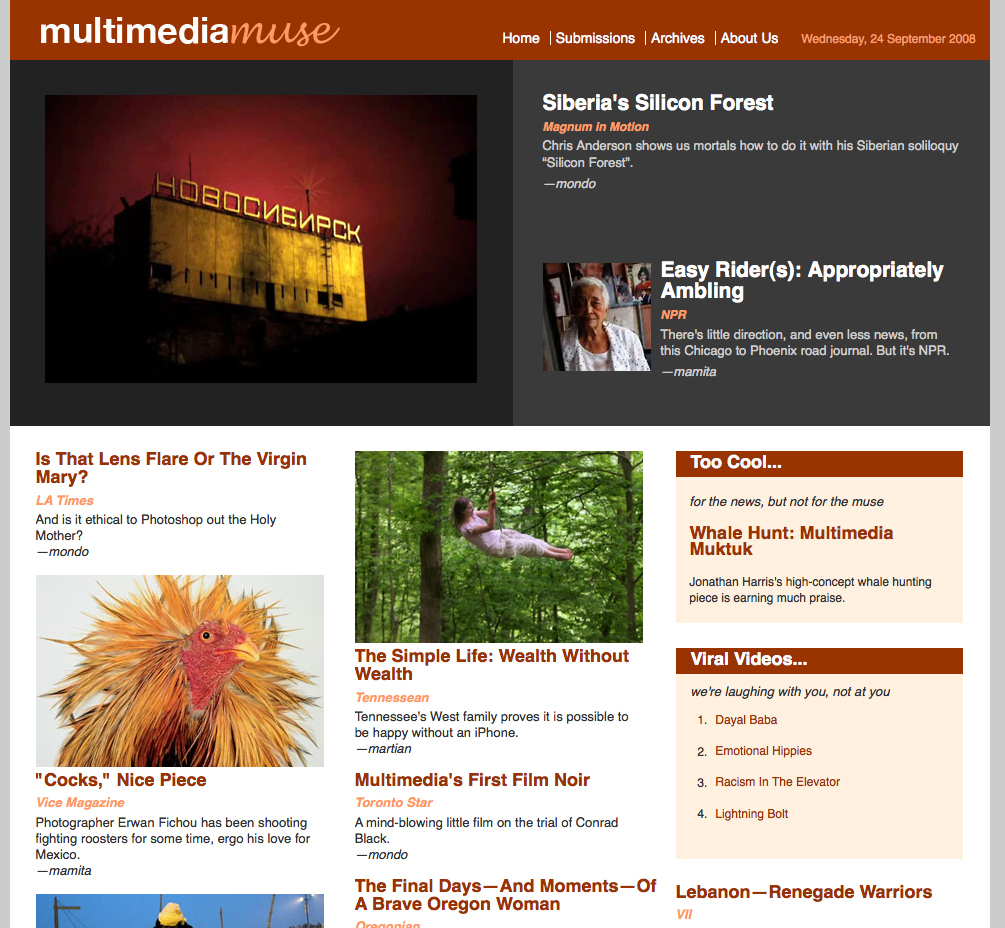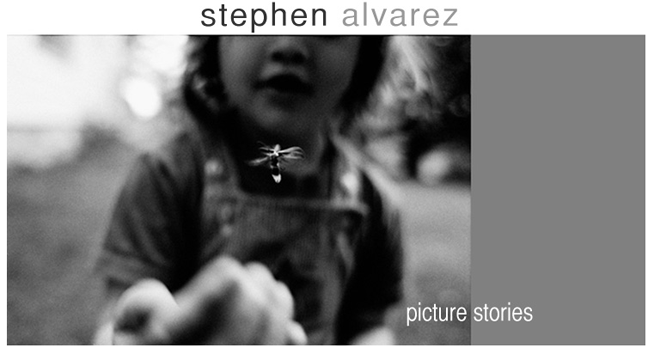I think the way clients and photographers communicate and reach each other and the job of Photo Editor will profoundly change in the next decade. There’s exciting technology to take advantage of and the potential of the internet has barely been tapped by publishers. I wanted to start talking with .com and junior Photo Editors to look at the way they’re using technology and get a feel for what the future might bring.
 I met Ryan Schick at the Photoshelter panel in NY a few weeks back and found him to be very well spoken and thoughtful about the industry. Ryan works for Condé Nast’s Portfolio.com as the News Photo Editor where he sources all the daily news pictures and develops larger photo essay projects. He’s young and a .com Photo Editor so I thought he might have a different take on how he finds photographers and how the future might play out.
I met Ryan Schick at the Photoshelter panel in NY a few weeks back and found him to be very well spoken and thoughtful about the industry. Ryan works for Condé Nast’s Portfolio.com as the News Photo Editor where he sources all the daily news pictures and develops larger photo essay projects. He’s young and a .com Photo Editor so I thought he might have a different take on how he finds photographers and how the future might play out.

You seem like a fairly technologically savvy Photo Editor. Is that a generational thing or have you made an effort to incorporate emerging technology into your workflow?
I wouldn’t say it’s necessarily a generational thing. I’ve worked with editors who are significantly older that are interested in technology as a device to develop more efficient ways to receive the imagery they need from the photographers in a timely matter. New means of image transportation and tools that enable more efficient communication have always interested me. Email has always been a central tool in my life. Heck, my first email address was 73514,1650@compuserve.com. This was back in 1992 before AOL, Prodigy, and others introduced alphanumeric email addresses.
I’m curious about how you communicate with photographers and your thoughts on how it might evolve.
Instant messenger is a remarkable tool, if properly used. Given it’s intimacy and the opportunity for it to be invasive to the recipient, it requires a certain amount of sensitivity on the users part There are multiple photographers I talk with on a daily basis via IM. Example; I communicate on a daily basis with photographers who are currently working on projects. It’s remarkable to witness a project develop, in real-time, with a photographer who is half-way around the world. Observations and suggestions are easily communicated; picture ordering, toning, and other variables can be done on the fly.
Apple’s iChat video capability is a tool that I still have yet to take to completely. I’m not sure how this will progress in the future, but for the time being I find instant messaging to be an sufficient replacement for email and phone conversations.
What about the ways photographers market themselves to Photo Editors. Books, mailers, email campaigns. Certainly there’s room for change there. The books are so expensive to make and ship certainly we eventually don’t need those anymore do we?
I still believe that photographers might not necessarily need the big-tent image distribution agencies to be successful in today’s market. I’m more impressed by the photographer who has taken the long-term investment strategy of developing personal relationships with his or her editors. There are magnificent tools out there that photographers can utilize to represent themselves and ultimately distribute their material.
I’ve always admired the photographer who updates his or her online portfolio on a regular basis. In a way, I think the digital reformation has made many of the dead-tree portfolio books we’ve grown accustomed to obsolete. I know it’s a tough market for most photographers out there and portfolios are not inexpensive to produce. I’d rather see photographers develop an online portfolio that demonstrates their personal eye toward presentation and detail and put their money back into a personal project that will help them along with an underdeveloped skill-set.
Email distribution and mailers are also objects I’ve taken greater attention towards in recent months. There are several photographers out there, including a young Philadelphia-based photographer named Steve Boyle, who take enormous strides to constantly bring editors attention to their every-growing body of work. Steve’s persistence in developing a visual style of his own is equaled only by his determination to constantly develop open channels to editors. I’m not certain whether or not this is an off-shoot of his efforts in self-promotion, but he seems remarkably well informed in visual trends and even runs several of his tests by me on a regular basis.
This however is not something that he and I fell into overnight. I cite this because I think many photographers take the ‘battering ram’ approach toward self-representation. I cite an example of a photographer who was referred to me by a former colleague and for whom I have an enormous amount of respect for. What started as a recommendation and an appointment to view his body of work turned into a multiple-times-per-day phalanx of phone calls and emails. By the time the actual appointment to meet came around I had frankly grown exasperated by his persistence and for better or worse was uninterested in the actual meeting.
What about a photographers website, do you ever do more than just go and look at the pictures?
I don’t just use a photographers website to look at the work they want to present (ie. putting their best face forward); there is another facet of their site that I’ve grown remarkably fond of. Being a user of Safari, I have a quick-tab on my address bar that currently loads the following personal blogs:
aphotoaday.org
Kirk Mastin
Michael Rubenstein
Jensen Walker
Robert Caplin
Justin Fowler
Mike Terry
Matthew Williams
Tara Todras-Whitehill
Mark Rebilas
Dustin Snipes
Thomas Boyd
Chris Detrick
Rachel Hulin’s ‘Shoot The Blog’
& Redux’s RSS Feed
At current count, I check these blogs and 21 others on a daily basis. Not all of these blogs are updated regularly but several of them, including Matthew Williams’, are well developed because they give you a better idea into the scene the photographer was given and how he executed his coverage. I like being able to see a larger take whenever possible. I think a personal blog can be a remarkably effective tool for a photographer to communicate to an attentive audience. I’m certain I’m not the only editor to regularly check photographers’ blogs, but I think as photographers continue to recognize this as an effective tool of free self-promotion, its popularity will continue to grow.
Certainly in the not too distant future all publications will have .com Photo Editors or the PE will spend much of their time working on the .com side of the photography. With a healthy budget and unlimited pages to publish work how can this not be a great thing for photographers? Why do I keep seeing tiny little photographs on publishers websites?
At Portfolio.com, one of the things we quickly realized was that we could publish additional material that would not have otherwise made the magazine, not due to quality issues but from the finite amount of pages in the magazine delegated to individual features.
Case in point: Photographer Michael Christopher Brown developed a magnificent photo essay for our July 2008 edition on the efforts of Chinese authorities to divert precious water resources from farms and villages in the surrounding provinces to fill the expansive fountains that line the Olympic promenade in Beijing. Portfolio editor Sarah Weissman had an initial edit of 30 images from the more than 250 image submitted by Michael. Through their mutual cooperation, Michael and Sarah consolidated his take into 5 images that were eventually published in our print edition. Recognizing the opportunity to develop a more robust online presentation we added an additional 7 images to our slideshow to expand the depth of the visual coverage associated with the online article. (See it here)
This can be a lesson to editors who are currently wary of their own dot-com’s ability to recognize the expansive opportunity they have to present the work that they and the photographers have labored so hard let see the light of day. Given the limited amount of financial resources (read: free) required to publish a slideshow online I would only envision further publications using their dot-com’s in such a fashion for more robust photographic essays online. Many of them already have.
As for the tiny pictures on our site, I wish there was a more effective way to maximize the exposure of multiple stories with large imagery, but from a basic design aesthetic I find that to be quite difficult on a news site.
However, I do salivate over the photographic presentation of Garden & Gun magazine online. Beautiful!



